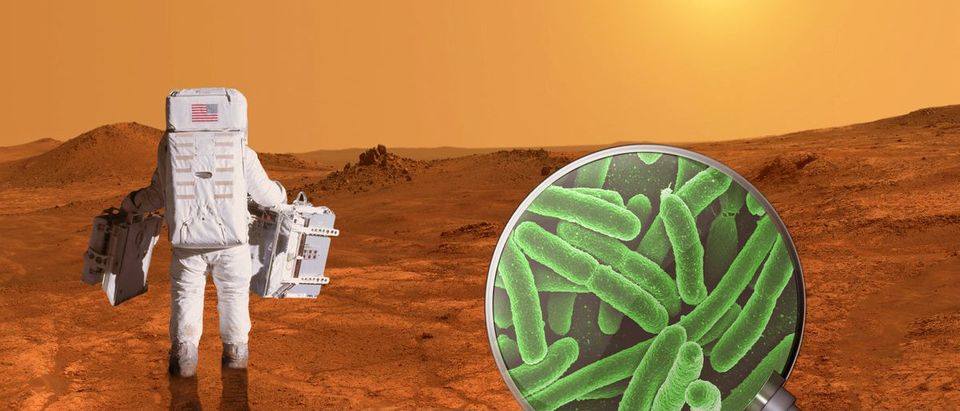Scientists discovered a 3.7-billion-year-old fossil fossil that could hold the key to the development of life on Mars.
University College London researchers who discovered the fossil say life on Earth likely started up to 4.5 billion years ago while Mars still had oceans and an atmosphere.
The scientists who made the find think that looking for similar fossils on the Red Planet could be humanity’s best chance of finding evidence of alien life in the near future.
“Early Mars and early Earth are very similar places, so we may expect to find life on both planets at this time,” Matthew Dodd, the lead author of the study, said in a press statement. “We know that life managed to get a foothold and evolve rapidly on Earth. So if we have life evolving in hydrothermal vent systems maybe even 4.2 billion years ago when both planets had liquid water on their surface, then we would expect both planets to develop early life.”
Before this discovery, the oldest confirmed life on Earth was dated to 3.4 billion years ago, leading scientists to speculate that life probably started around 3.7 billion years ago.
Large parts of Mars were probably capable of supporting life for over 100 million years, new observations by NASA’s Mars rover Curiosity published in December suggest.
Curiosity determined that the crater on Mars was probably a habitable lake-and-stream system billions of years ago and included fresh neutral-pH water. Additionally, the Mars rover found complex minerals that were probably created in a relatively habitable environment.
Research indicates that if life did exist on Mars, it would likely be relatively primitive, just like life on Earth during the same time period.
The earliest potential evidence of life on Earth is 3.5 billion years old, but the first multi-cellular animals did not appear until about 600 million years ago and were not diversified until roughly 542 million years ago in the Cambrian “explosion.”
The new study is just the latest to determine that the Red Planet may have contained habitats with the potential to support life.
Scientists at the University of Texas published research in November that said some volcanic areas on Mars could be ideal chemical environment for life to develop and flourish even in the present day. Lava from volcanoes and ice from glaciers would combine to form a fairly warm environment by Martian standards that even has access to a lot of water ice, and potentially even liquid water.
Geologists announced in September that they found hydrogen, a critical component necessary to support life, can be produced by earthquakes on Earth. They concluded that the same kind of “Marsquakes” could produce hydrogen on Mars, removing a major barrier to life. The Red Planet’s atmosphere is rich in oxygen, so an ample supply of hydrogen could mean that water is more common on Mars than generally believed.
Send tips to andrew@
All content created by the Daily Caller News Foundation, an independent and nonpartisan newswire service, is available without charge to any legitimate news publisher that can provide a large audience. All republished articles must include our logo, our reporter’s byline and their DCNF affiliation. For any questions about our guidelines or partnering with us, please contact licensing@dailycallernewsfoundation.org.


